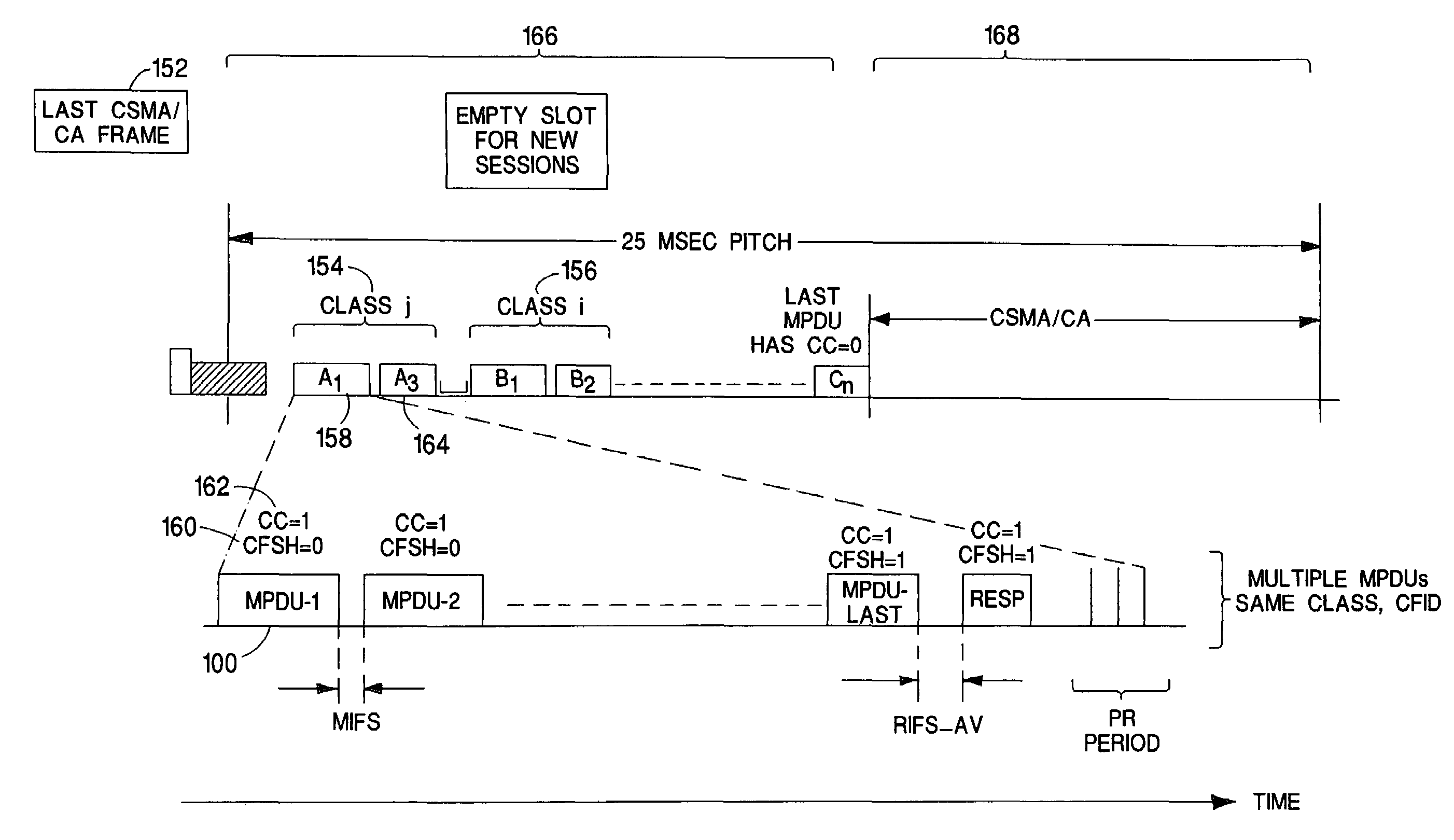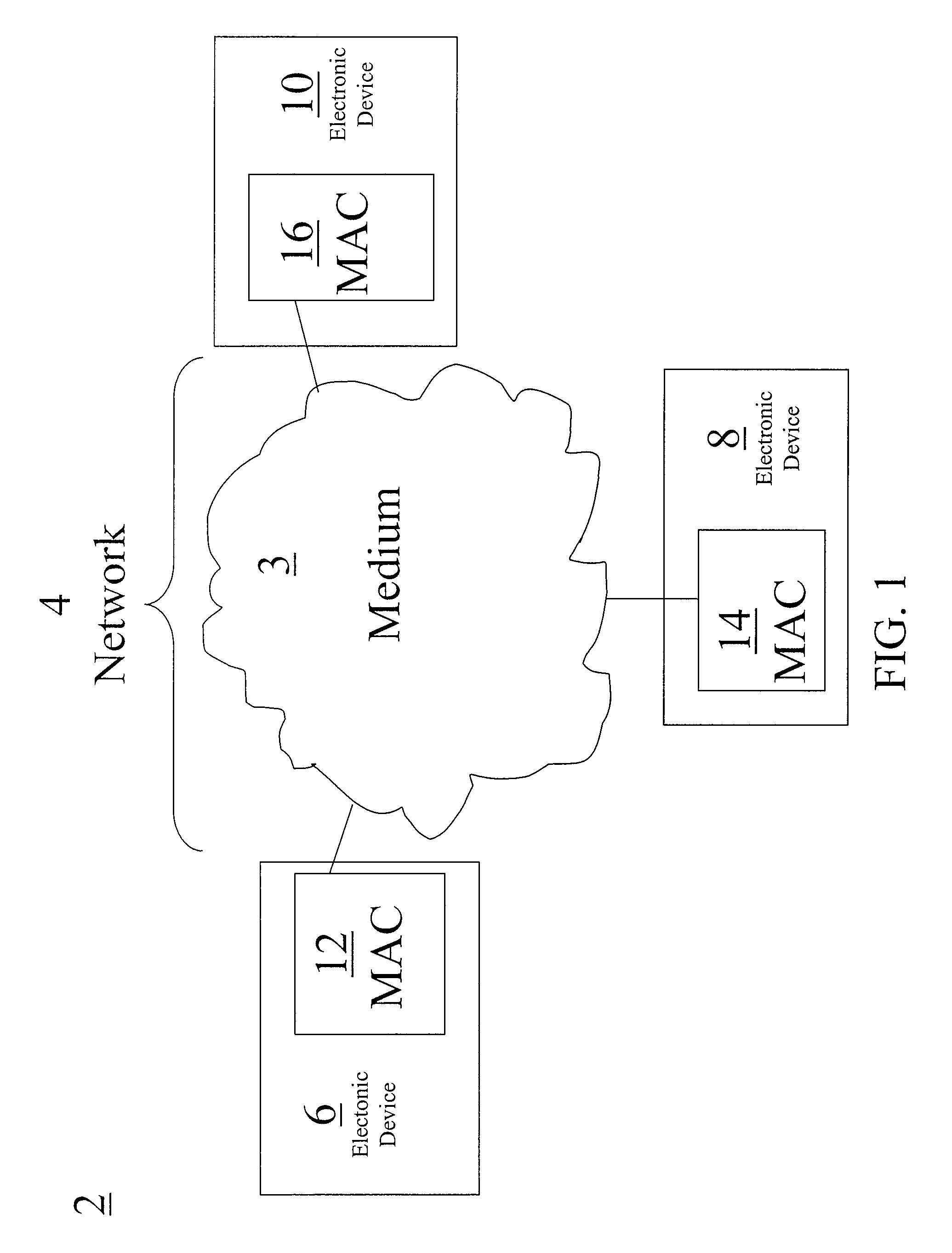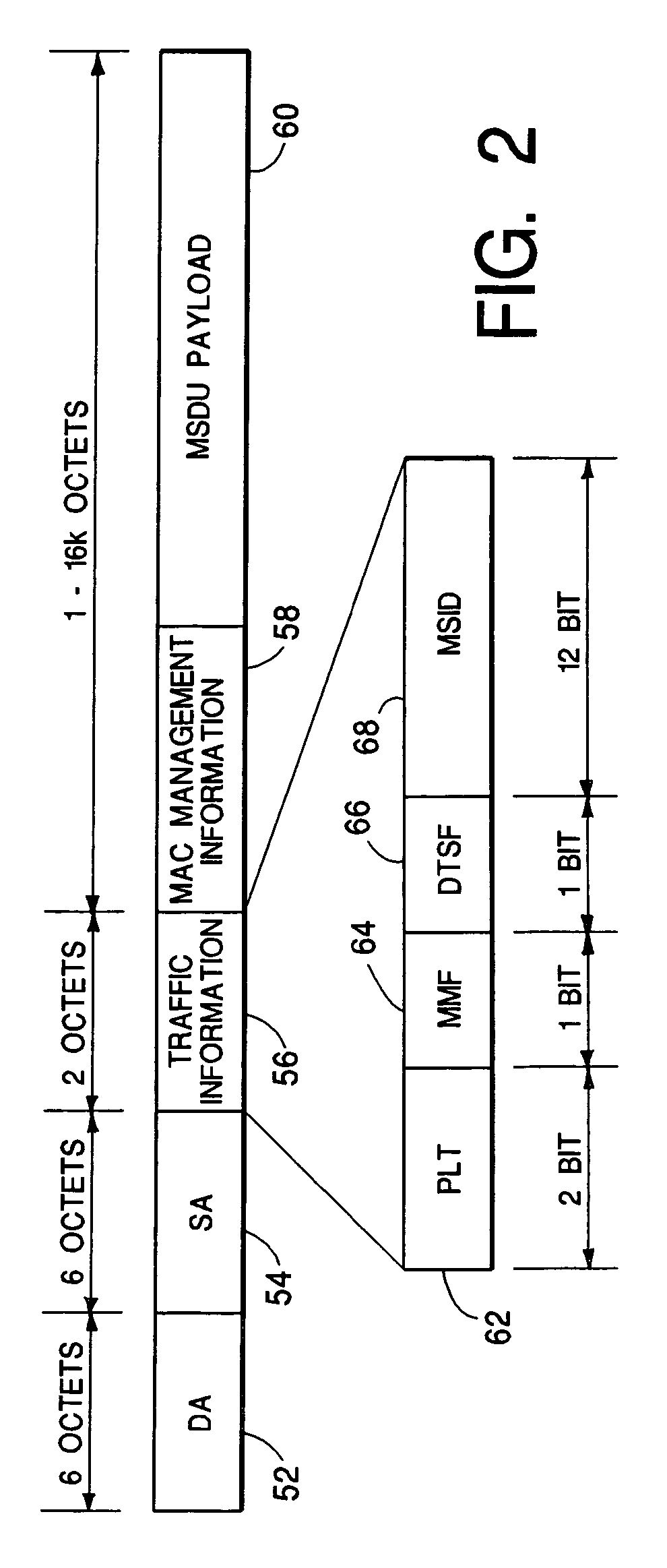Contention-free access intervals on a CSMA network
- Summary
- Abstract
- Description
- Claims
- Application Information
AI Technical Summary
Benefits of technology
Problems solved by technology
Method used
Image
Examples
Embodiment Construction
[0023]There are a great many possible implementations of the invention, too many to describe herein. Some possible implementations that are presently preferred are described below. It cannot be emphasized too strongly, however, that these are descriptions of implementations of the invention, and not descriptions of the invention, which is not limited to the detailed implementations described in this section but is described in broader terms in the claims.
[0024]A network configuration includes communications medium 3 and network 4 in which electronic devices 6, 8, and 10 (e.g., audiovisual equipment) communicate over medium 3. Electronic devices 6, 8, and 10 include media access controllers (MAC) 12, 14, and 16 that manage communication access to the network 4 for electronic devices 6, 8, and 10, respectively. MACs 12, 14, and 16 implement the data link layer and connect to the physical layer of the Open Systems Interconnection (OSI) network architecture standard. In a general sense,...
PUM
 Login to View More
Login to View More Abstract
Description
Claims
Application Information
 Login to View More
Login to View More - R&D
- Intellectual Property
- Life Sciences
- Materials
- Tech Scout
- Unparalleled Data Quality
- Higher Quality Content
- 60% Fewer Hallucinations
Browse by: Latest US Patents, China's latest patents, Technical Efficacy Thesaurus, Application Domain, Technology Topic, Popular Technical Reports.
© 2025 PatSnap. All rights reserved.Legal|Privacy policy|Modern Slavery Act Transparency Statement|Sitemap|About US| Contact US: help@patsnap.com



